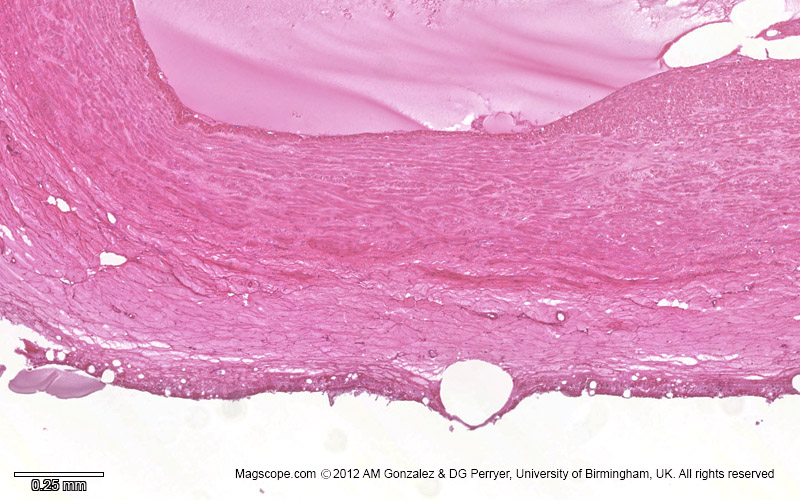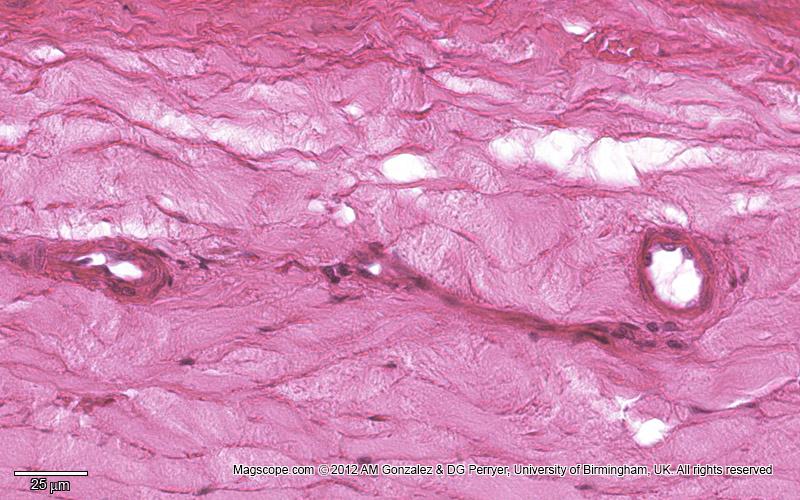Histology
Artery
Many of the slides below are optimised for colour-blind people - click the spectrum icon.
Click here to scroll down to the accompanying text and MCQs.





Self-assessment MCQs (single best answer)
Which of the following blood vessels carries blood away from the heart?
Which layer of the arterial wall is in direct contact with blood flow?
What is the largest artery in the human body?
What type of blood do pulmonary arteries carry?
What is the function of capillaries in the circulatory system?
What condition is caused by the hardening of arteries due to plaque build-up?
Which type of artery is generally larger and more elastic?
What is the hollow internal cavity in an artery where blood flows called?
Which of the following can contribute to atherosclerosis?
Which arterial layer contains small blood vessels known as vasa vasorum?
Dentaljuce
Dentaljuce provides Enhanced Continuing Professional Development (CPD) with GDC-approved Certificates for dental professionals worldwide.
Founded in 2009 by the award-winning Masters team from the School of Dentistry at the University of Birmingham, Dentaljuce has established itself as the leading platform for online CPD.
With over 100 high-quality online courses available for a single annual membership fee, Dentaljuce offers comprehensive e-learning designed for busy dental professionals.
The courses cover a complete range of topics, from clinical skills to patient communication, and are suitable for dentists, nurses, hygienists, therapists, students, and practice managers.
Dentaljuce features Dr. Aiden, a dentally trained AI-powered personal tutor available 24/7 to assist with queries and provide guidance through complex topics, enhancing the learning experience.
Check out our range of courses, or sign up now!











